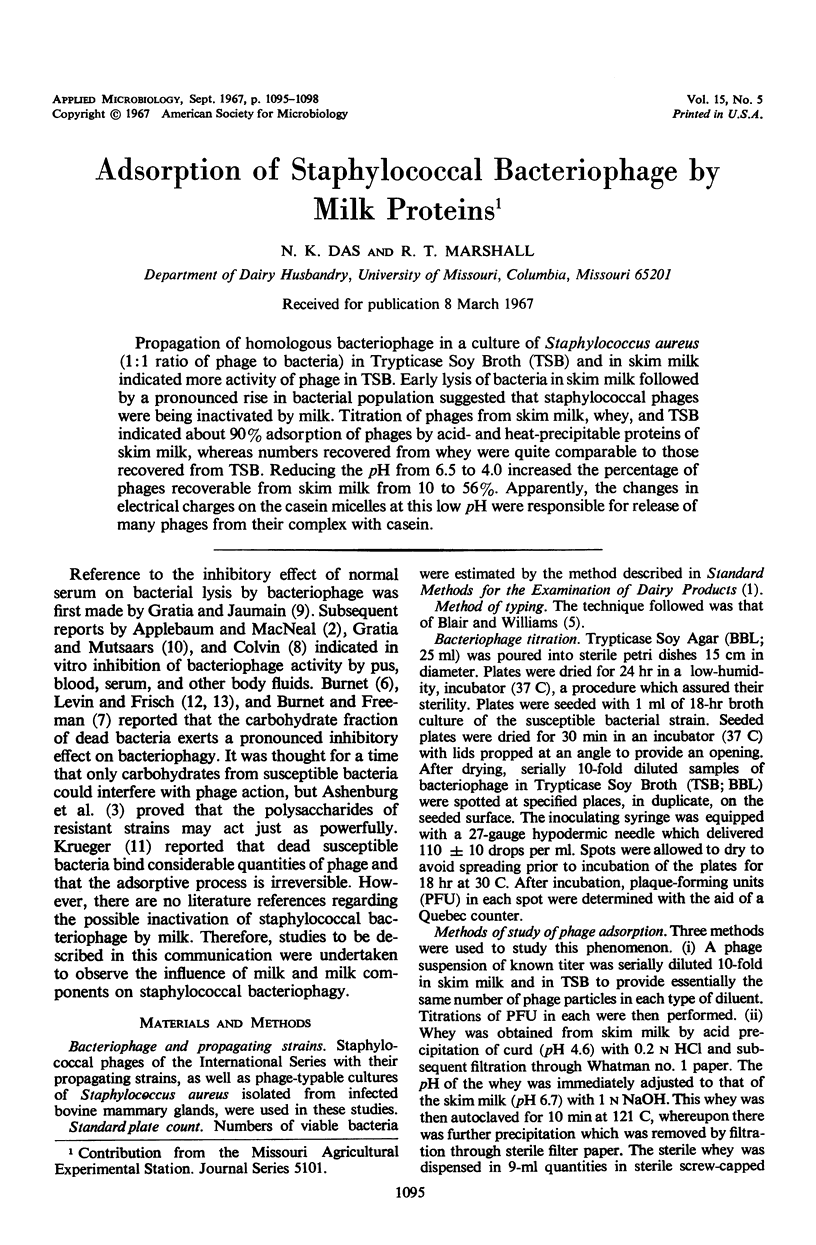Abstract
Propagation of homologous bacteriophage in a culture of Staphylococcus aureus (1:1 ratio of phage to bacteria) in Trypticase Soy Broth (TSB) and in skim milk indicated more activity of phage in TSB. Early lysis of bacteria in skim milk followed by a pronounced rise in bacterial population suggested that staphylococcal phages were being inactivated by milk. Titration of phages from skim milk, whey, and TSB indicated about 90% adsorption of phages by acid- and heat-precipitable proteins of skim milk, whereas numbers recovered from whey were quite comparable to those recovered from TSB. Reducing the pH from 6.5 to 4.0 increased the percentage of phages recoverable from skim milk from 10 to 56%. Apparently, the changes in electrical charges on the casein micelles at this low pH were responsible for release of many phages from their complex with casein.
Full text
PDF



Selected References
These references are in PubMed. This may not be the complete list of references from this article.
- BARTELL P. F., THIND I. S., ORR T., BLAKEMORE W. S. The vivo interaction between staphylococcus bacteriophage and Staphylococcus aureus. J Exp Med. 1963 Jul;118:13–26. doi: 10.1084/jem.118.1.13. [DOI] [PMC free article] [PubMed] [Google Scholar]


